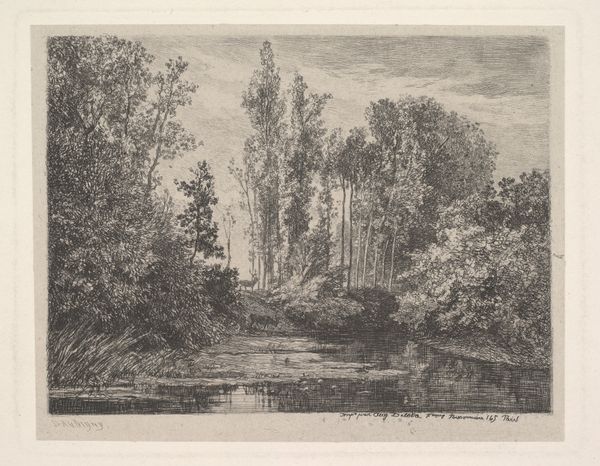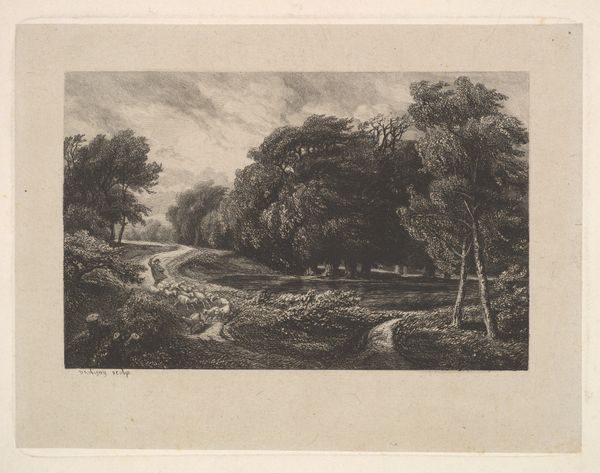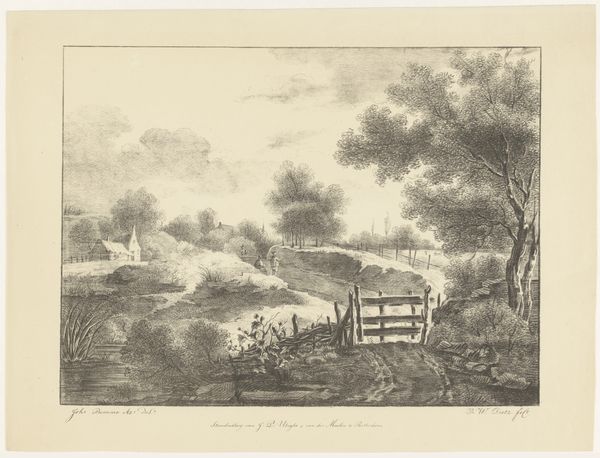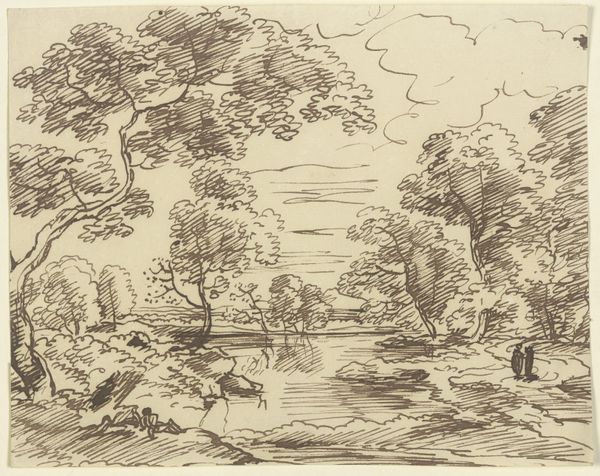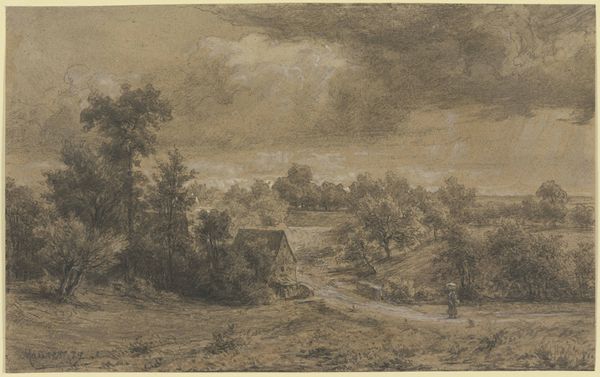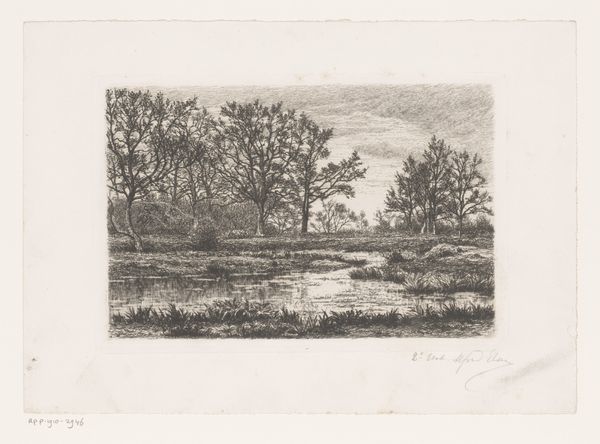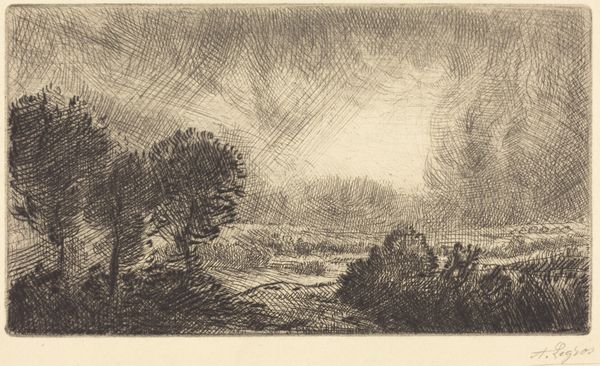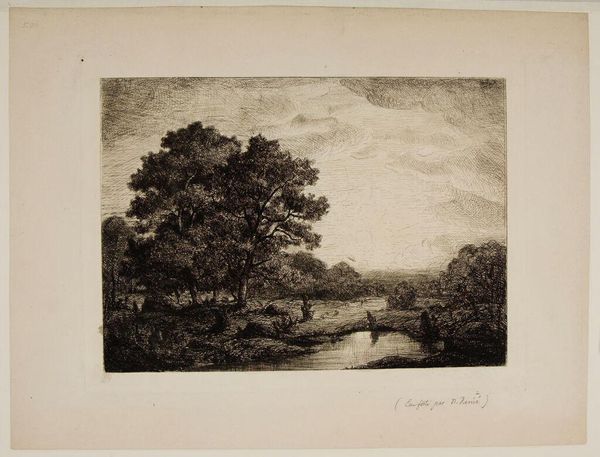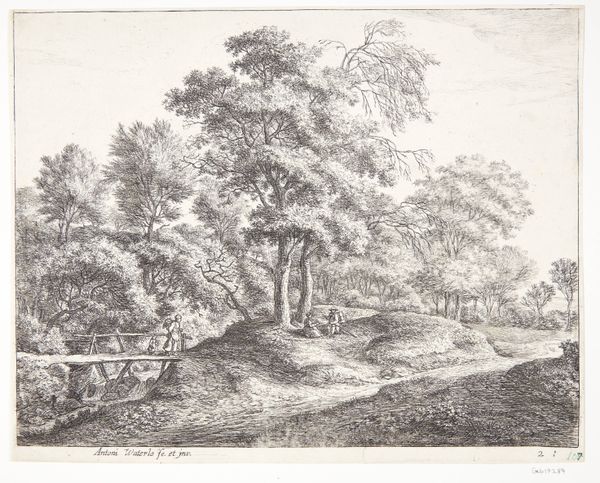
Dimensions: plate: 15.1 × 19.8 cm (5 15/16 × 7 13/16 in.) sheet: 29.9 × 40.4 cm (11 3/4 × 15 7/8 in.)
Copyright: National Gallery of Art: CC0 1.0
Editor: Here we have "A Rustic Bridge," an etching and print made by Thomas Moran in 1879. The textures he achieves with just ink are amazing – especially the sky, it feels incredibly dynamic and captures a unique moodiness! What are your thoughts on the formal aspects of this print? Curator: Note how the composition, a dialogue between light and shadow, shapes our understanding. Observe how Moran manipulates value to create depth, drawing our eye from the detailed foreground, across the bridge, and then dissolving into the hazy distance. Editor: Yes, that tonal range is really something. It's almost photorealistic despite being an etching. I suppose that focus on detailed rendering must have taken an intense amount of crosshatching. Curator: Indeed. Semiotically speaking, crosshatching is fundamental to generating tonal depth and textural variation that can be understood as realism. Moreover, contemplate the bridge. Editor: What do you mean? Curator: As a visual object within the frame, the bridge’s formal attributes are key in leading the eye and, symbolically, creating a transitional structure between pictorial space. How do the horizontal lines play with the vertical lines of trees to either unify or fracture the composition? Editor: Ah, I see. The horizontal lines seem to both divide the image but also connect the two banks. It also echoes the horizon line, uniting the earth and sky more. That gives me something new to consider every time I look at this landscape. Curator: Precisely. Such structured considerations help to expand one’s awareness of both form and intention. Editor: Absolutely! I appreciate the way that breaking it down into composition and the relation of forms, creates an interesting viewing experience and better overall perspective on artistic methods.
Comments
No comments
Be the first to comment and join the conversation on the ultimate creative platform.

